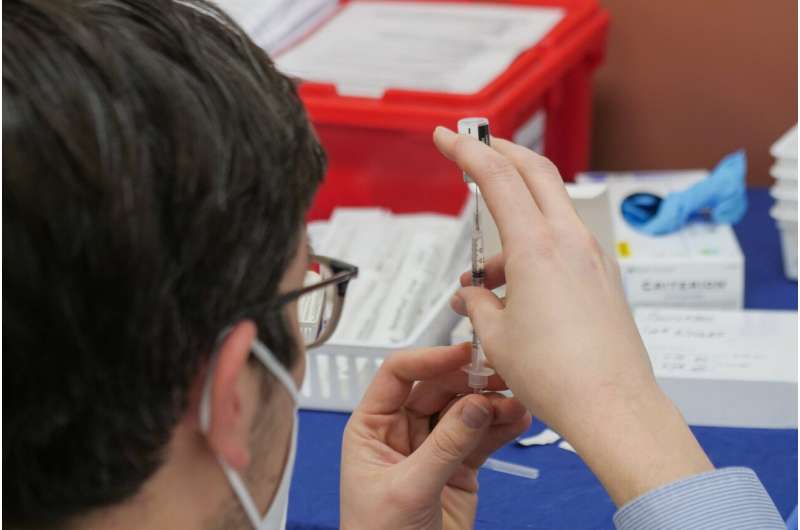
As vaccines that help protect against COVID-19 become available for more people across the United States, questions have been raised about whether institutions like schools and universities should require their students and staff to become vaccinated.
A new study by Simon Haeder, assistant professor of public policy at Penn State, found that a majority of those surveyed supported mandates that required students and teachers to be vaccinated against COVID-19. However, more people supported broader vaccine mandates that don’t specifically include those against COVID-19.
Haeder said political partisanship, along with race and gender, helped account for these differences.
“Even if children are less likely to get severely ill, vaccination of students has been shown to have benefits such as lower numbers of community deaths, particularly among the elderly,” Haeder said. “Mandates may serve as a crucial policy tool to help reign in COVID-19 and reach herd immunity, which we otherwise might not reach any time soon.”
Haeder added that the findings—recently published in the journal Vaccine—suggest that while the majority of Americans would be supportive of COVID-19 vaccine mandates in educational settings, about one in five would be indifferent and another one in five would be opposed.
Since the beginning of the pandemic, policy makers have debated about how to determine whether educational institutions are safe enough for students to return in person. The development of safe and effective vaccines, Haeder said, offers a potential way for society to eventually return to normal.
He added that while making vaccines mandatory—also known as vaccine mandates—has been a strategy to control epidemics in the past, they have not been without controversy.
“Massachusetts mandated smallpox vaccinations in the early 1800s, Alaska and California used mandates in the 1970s to control measles, and in more modern times, there are often certain vaccine mandates for living in the dorms on some college campuses,” Haeder said. “But these policies have often been met with vocal opposition from certain groups of Americans, and with the pandemic being so politicized, we were curious about how Americans felt about potential COVID-19 vaccine mandates.”
For the study, Haeder developed and sent a survey to 2,404 participants in the fall of 2020. The nationally representative survey included questions about how the participants felt about requiring vaccines for students and teachers in three different educational settings: daycares, K-12 schools, and universities and colleges.
The survey also asked participants questions designed to measure political partisanship, political knowledge, and beliefs about whether schools are an appropriate place to deliver health care, as well as demographic information such as race, ethnicity, education and gender.
The researchers found that Democrats were consistently more supportive of vaccine mandates than moderates or Republicans. White Americans and people who believed schools were appropriate settings for providing health services were also more likely to support any vaccine mandate.
Haeder said there are several possible reasons for some of these differences.
“Partisanship has permeated everything related to COVID-19 and lots of misinformation has been spread, including from individuals in leadership positions,” Haedaer said. “Additionally, there’s a general growing distrust of science and its elites, which when combined with the novelty of the illness and vaccines, could contribute to this lack of support for vaccine mandates in certain groups.”
Additionally, the researchers found that in daycare settings, about 70% of participants “definitely” or “probably” supported general vaccine mandates for students, a little over 50% supported COVID-19 vaccine mandates for students, and about 60% supported COVID-19 vaccine mandates for teachers.
For K-12 schools, about 68% supported general mandates for students, just over 50% supported COVID-19 vaccine mandates for students, and just under 60% supported COVID-19 vaccine mandates for teachers. For colleges and universities, the results were about 65%, 55% and 58%, respectively.
Haeder said that in addition to helping to guide policy makers as efforts continue to be made to control the pandemic, the findings have other implications, as well.
Source: Read Full Article
